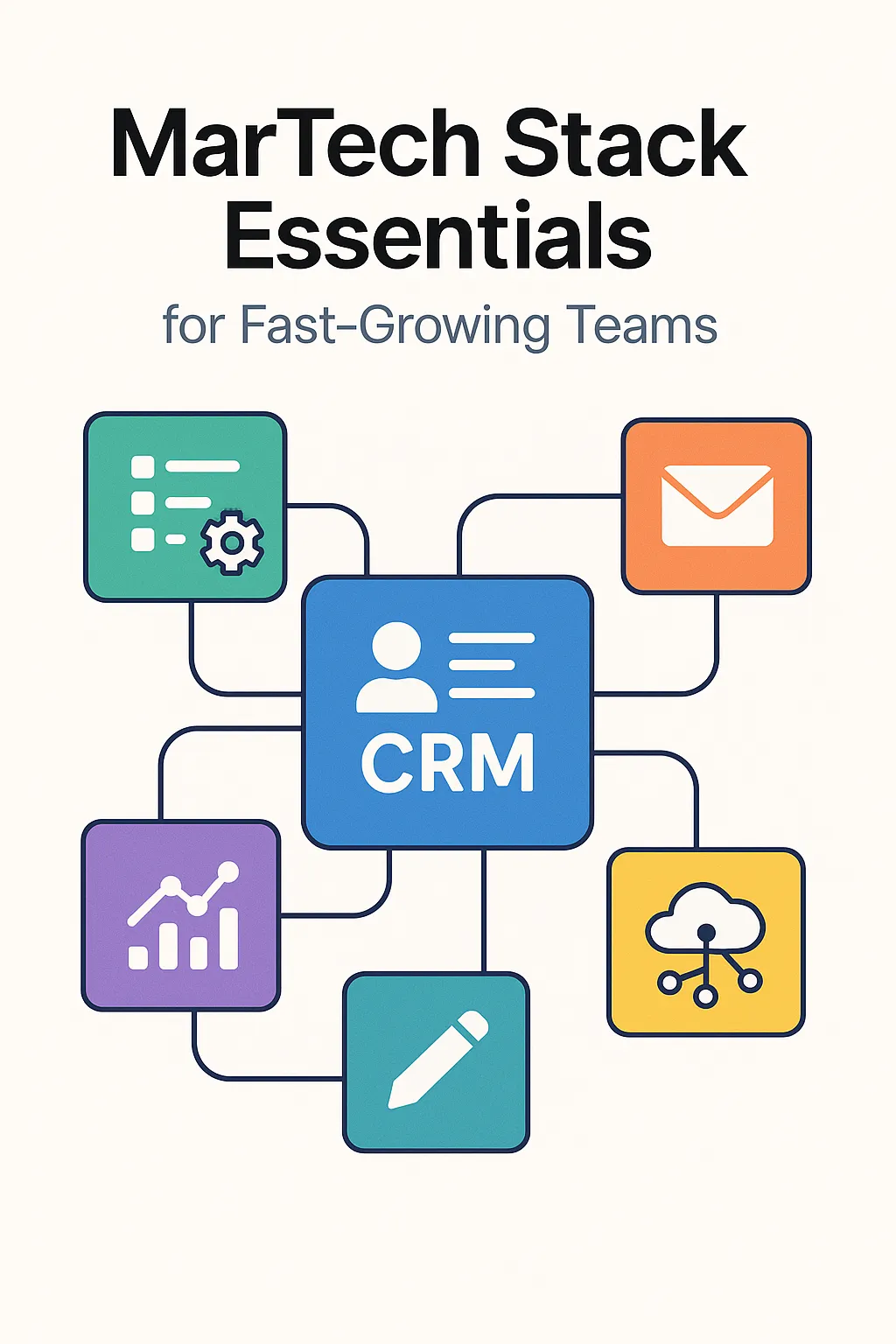MarTech Stack Essentials for Fast-Growing Teams

When your team is growing fast, the right MarTech stack isn’t just a nice-to-have—it’s the backbone that keeps strategy, execution, and measurement aligned.
In high-growth environments, inefficiencies scale just as quickly as successes. Without the right technology foundation, marketing teams can drown in disconnected tools, duplicated work, and incomplete customer data.
Here’s how to avoid that trap.
1. Customer Relationship Management (CRM)
The CRM is the beating heart of your marketing tech stack. It’s your single source of truth for customer interactions, preferences, and purchase history.
What to look for:
- Centralized customer profiles
- Seamless integrations with email, ads, and support tools
- Robust segmentation and reporting
Examples: Salesforce, HubSpot, Zoho CRM
2. Marketing Automation Platform (MAP)
Your automation platform turns data into timely, personalized outreach, without overloading your team.
What to look for:
- Multi-channel campaign orchestration (email, SMS, push, direct mail)
- Dynamic content capabilities
- Behavior-triggered workflows
Examples: Braze, Klaviyo, Salesforce Marketing Cloud
3. Customer Data Platform (CDP)
A CDP unifies first-party data from all touchpoints, making it actionable across channels. For fast-growing teams, it’s the bridge between raw data and real-time personalization.
What to look for:
- Identity resolution across devices and sessions
- Real-time segmentation
- Easy activation into paid media and owned channels
Examples: Segment, mParticle, Salesforce Data Cloud
4. Analytics & Attribution Tools
If you can’t measure it, you can’t optimize it. Analytics tools give visibility into performance, while attribution ensures credit goes where it’s due.
What to look for:
- Cross-channel performance dashboards
- Multi-touch attribution modeling
- Cohort and funnel analysis
Examples: Google Analytics 4, Mixpanel, AppsFlyer
5. Collaboration & Project Management
Speed without alignment leads to chaos. Project management tools keep campaigns on track and teams in sync.
What to look for:
- Task and milestone tracking
- Kanban and Gantt views
- Integrations with creative and analytics platforms
Examples: Asana, Jira, ClickUp
6. Creative & Content Tools
Fast-growing teams can’t wait weeks for asset creation. Agile creative tools speed production without sacrificing brand quality.
What to look for:
- Template-based design systems
- Shared asset libraries
- Direct publishing to web and email platforms
Examples: Figma, Canva, Adobe Creative Cloud
Principles for Building Your Stack
- Integrate First, Buy Second — Prioritize tools that play well with your existing systems.
- Prioritize Data Quality — A powerful stack with bad data is just an expensive liability.
- Start with Core Needs — Nail CRM, automation, and analytics before layering on niche tools.
- Enable the Team — Every tool should reduce friction, not create it.
The Takeaway
Your MarTech stack should grow with you, not weigh you down. In a fast-scaling team, the right foundation enables you to move faster, personalize better, and measure smarter, without burning out your people or your budget.
If your current stack feels more like a patchwork than a platform, now’s the time to step back, audit, and rebuild for the growth ahead.
